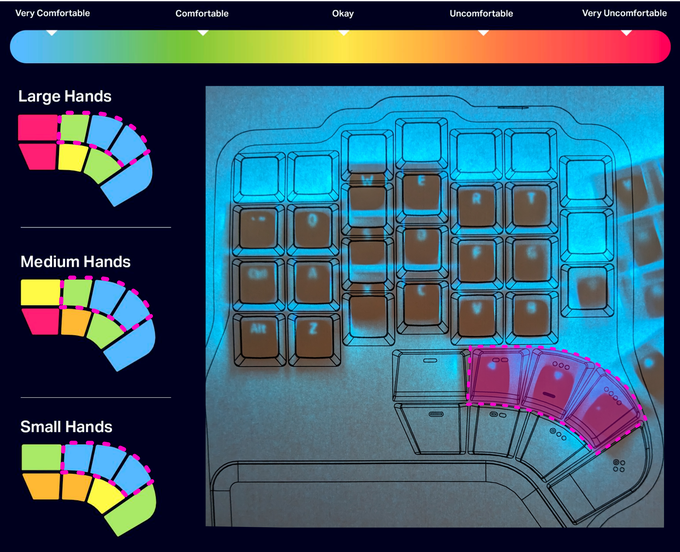Ergonomics
The ADM42 is designed to improve the efficiency of typists and developers. Every key can be accessed with less or equal effort compared to a conventional keyboard.
- Symetric modifiers and layer access - Distribute the load between hands, avoid finger stretching and provide a consistent behavior across layers for the most important keys
- Thumb cluster - Thumbs are essential, providing a more efficient and enjoyable alternative to many of the tasks that were handled inefficiently by the pinky fingers
- Special keys placement - Based on the frequency of their usage, see in the guide
- Optimized layouts - Colemak-DH, ColeMAX, Colemak and Dvorak are all included by default
- One-key distance - The keys are all positioned within a maximum distance of one key from the home position
- Angled split layout - A confortable base position with hands aligned with forearms
- Vertical staggering - Optimal finger placement for balanced access to both upper and lower rows
- Columnar arrangement - Reduces lateral finger movements
- Flatness - Comfortably rest your arms on the table
- Hot-swap switches - Allow the use of your favorite switches
Besides alleviating fatigue and reducing stress on fingers, we expect that many of these features will significantly enhance typing speed and accuracy.
Thumbs Cluster
On the ADM42, thumbs are responsible for many of the most important keys. Since their efficiency is crucial for us, the position and the angle of the keys are perfectly aligned with natural position and rotation of thumbs.

Interestingly, Dygma, while designing their Defy keyboard, has arrived at the exact same conclusion as ADM42, determining the position of thumbs keys that are the most comfortable to use for all hand sizes.
